Quick Airline Information:
✈Airline IATA* code: NH
✈Airline ICAO* code: ANA ✈Founded: 27 December 1952 ✈Website: www.ana.co.jp✈Alliance: Star Alliance
✈History
✈Operations and Destinations 🌍
✈Fleet ✈️
✈Photo Slide 📷✈Safety Video 🎬
✈Airline reviews ⭐
*IATA: (International Air Transport Association)
*ICAO: (International Civil Aviation Organization)
History Menu:
At the end of World War II, all private companies in Japan were banned from operating any aircraft under command of Allied Powers. Two years later, after the ban was lifted, ANA's earliest ancestor, Japan Helicopter (also known as Nippon Helicopter and Aeroplane), was founded on 27 December 1952. Nippon Helicopter was the source of what would later be ANA's International Air Transport Association, airline code, NH. The company began helicopter services in February 1953. On 15 December 1953, it operated its first cargo flight between Osaka and Tokyo using a De Havilland Dove, JA5008. This was the first scheduled flight flown by a Japanese pilot in postwar Japan.
Passenger services began on 1 February 1954 between Tokyo and Osaka, the aircraft was then upgraded to a De Havilland Heron in March 1954.
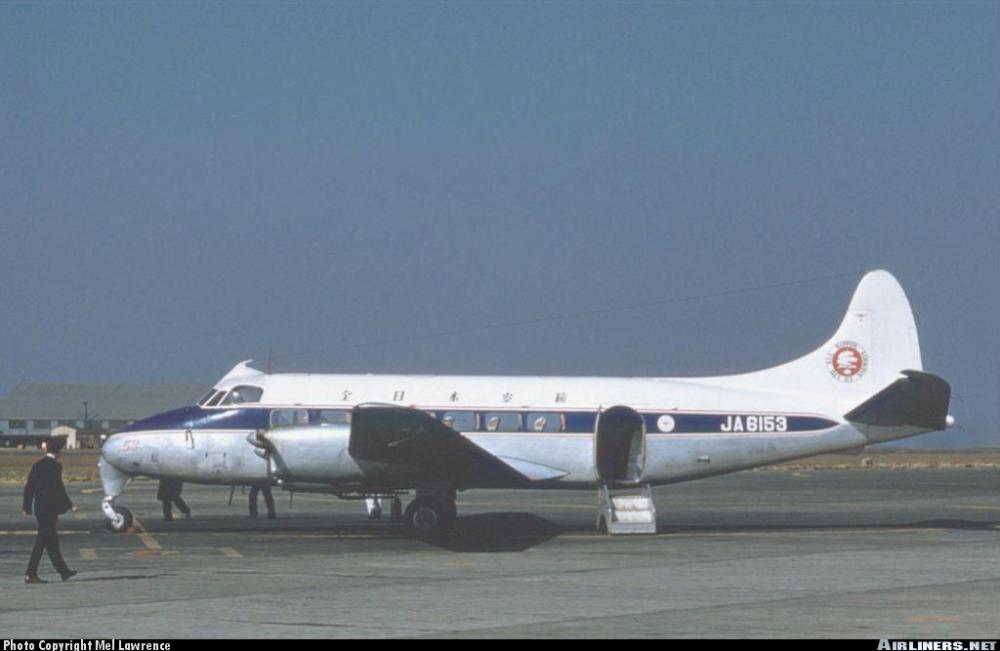
In 1955, Douglas DC-3s began flying for NH as well, by which time the airline's route network extended from northern Kyūshū to Sapporo. In December 1957 Nippon Helicopter changed its name to All Nippon Airways Company. (ANA)
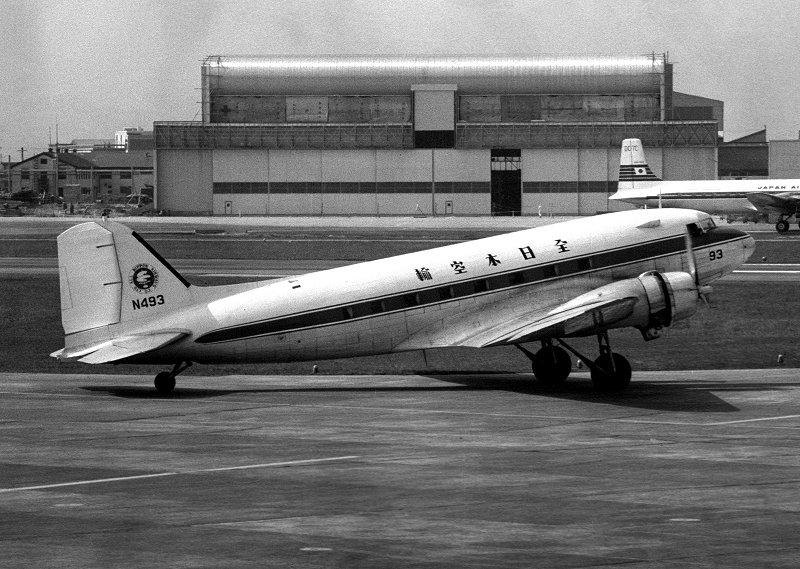
ANA's other ancestor was Far East Airlines. Although it was founded on 26 December 1952, one day before Nippon Helicopter, it did not begin operations until 20 January 1954. Far East Airlines merged with the newly named All Nippon Airways in March 1958. The result of the merger was Japan's largest private airline. The merged airline received a new Japanese name ( Zen Nippon Kūyu; Japan Air Transport). The company logo of the larger NH was selected as the logo of the new combined airline, and the new carrier operated a route network combined from its two predecessors.
In october 1959, Convair 440 were acquired. Far East Airlines ANA grew through the 1960s, adding the Vickers Viscount to the fleet in 1960 and the Fokker F27 in 1961. 1963 saw another merger, with Fujita Airlines.
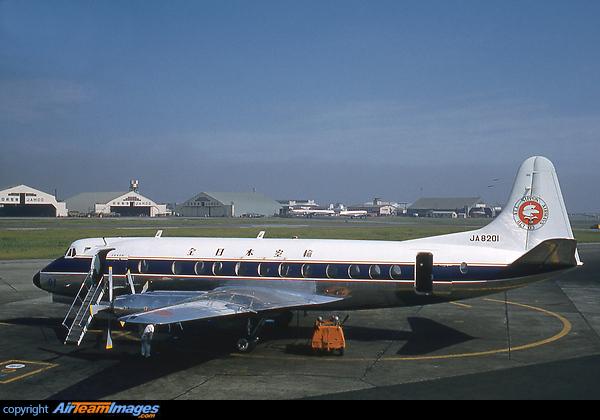
In 1965 ANA introduced jets with Boeing 727s on the Tokyo-Sapporo route. It also introduced Japan's first homegrown turboprop airliner, the NAMC YS-11 in 1965, replacing Convair 440s on local routes. In 1969, ANA introduced Boeing 737-200 services, as well it took the opportunity to launch a new livery in a two tone blue scheme.
By 1974, ANA had Japan's largest domestic airline network. While ANA's domestic operations grew, the Ministry of Transportation had granted government-owned Japan Airlines (JAL) a monopoly on international scheduled flights that lasted until 1986. From 1971, ANA was allowed to operate international charter flights: its first was with a Boeing 727 charter from Tokyo to Hong Kong on 21 February 1971.
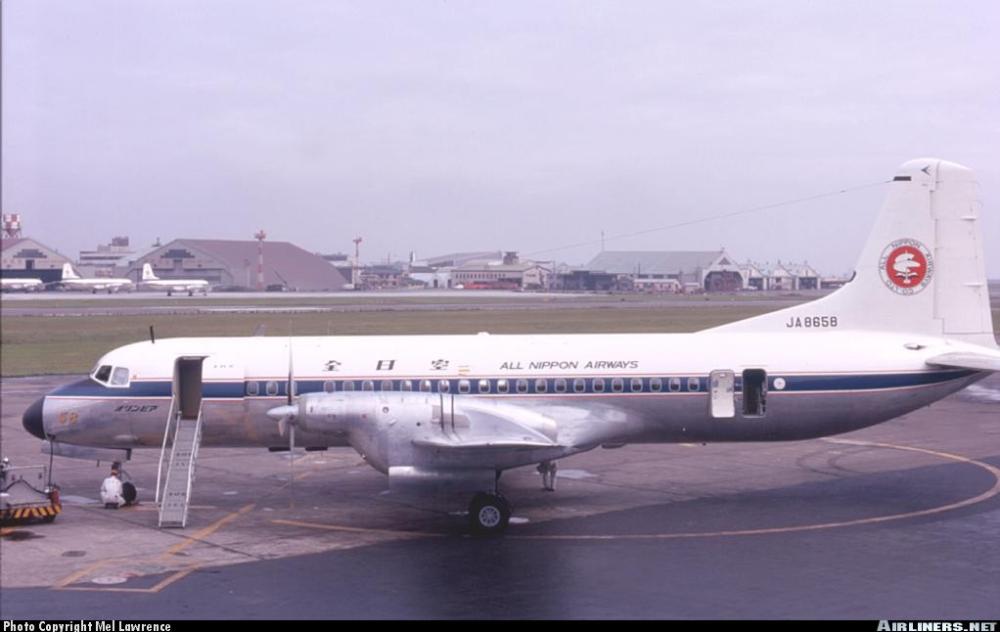
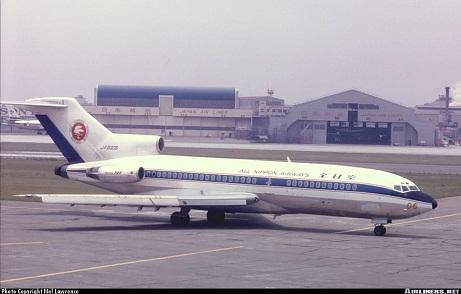
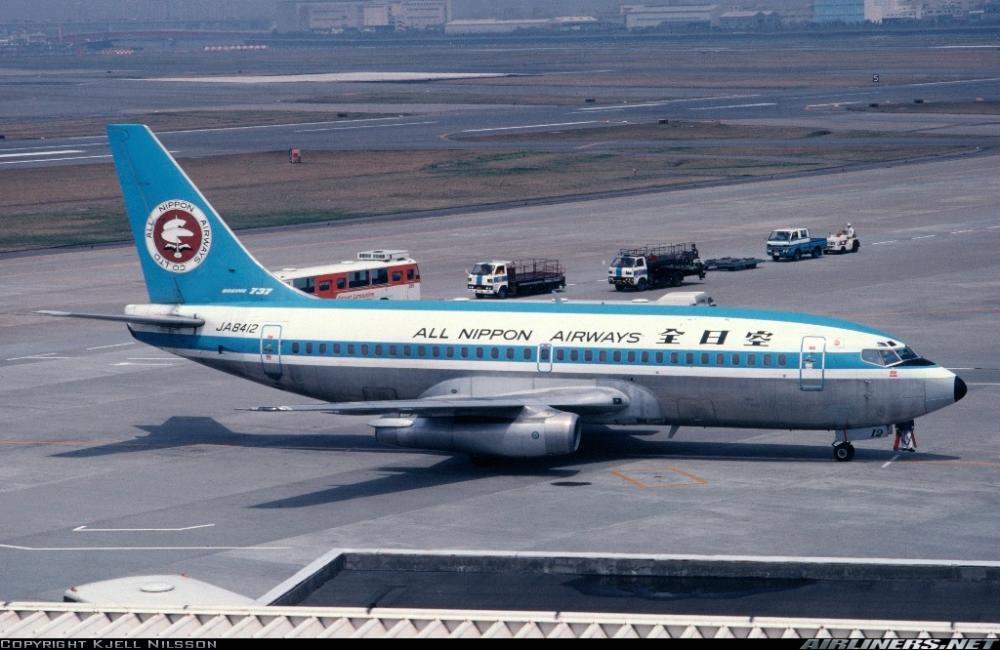
ANA bought its first wide body aircraft, six Lockheed L-1011s, in November 1971, the aircraft entered service on the Tokyo-Okinawa route in 1974. The carrier had ordered McDonnell Douglas DC-10s but cancelled the order at the last minute and switched to Lockheed. It was later revealed that Lockheed had indirectly bribed Prime Minister Kakuei Tanaka to force this switch: the scandal led to the arrest of Tanaka and several managers from ANA and Lockheed sales agent Marubeni for corruption.
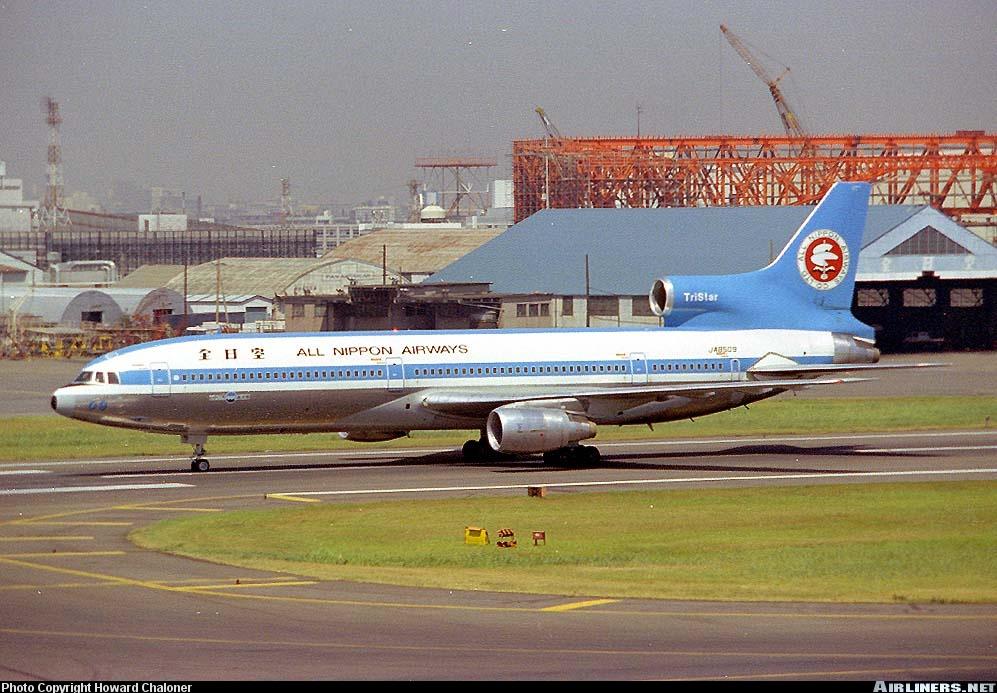
Boeing 747-200s were introduced on the Tokyo-Sapporo and Tokyo-Fukuoka routes in 1976. The carrier's first 747s were the short-range SR variant, designed for Japanese domestic routes. Boeing 767-200s were introduced in 1983 on domestic and Shikoku routes. In 1983, it also updated its logo to a modern 3 tone blue scheme, named as "Triton Blue".
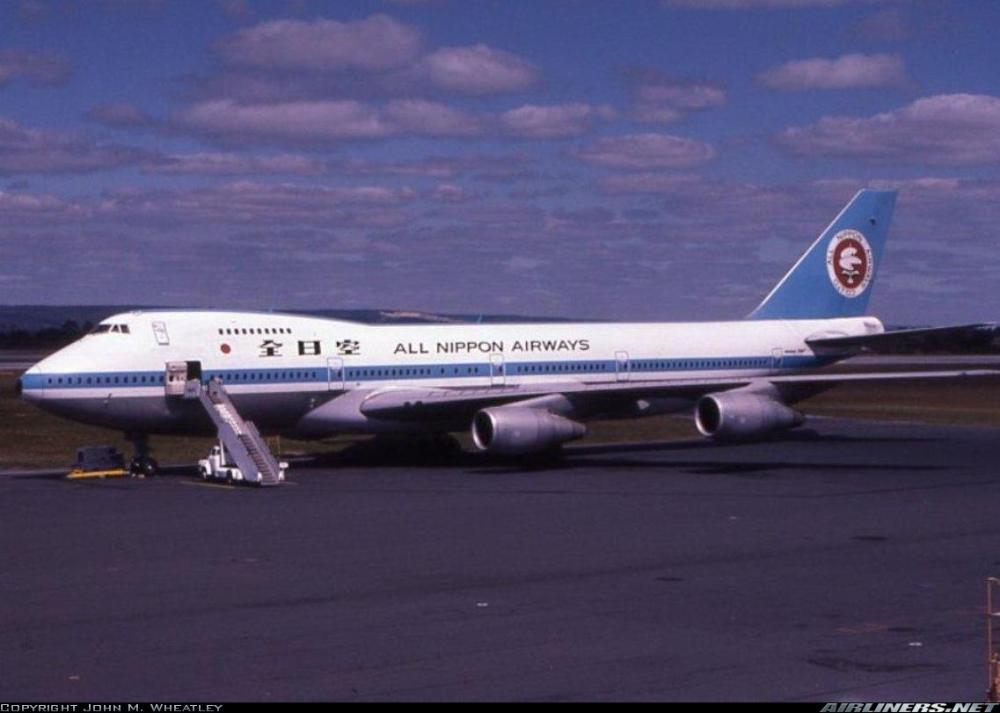
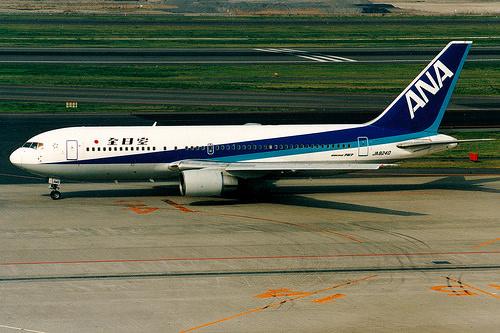
ANA had suffered a blockage to operate international flights, although it was operating charter flights from 1971, (Tokyo to Hong Kong), it wasn't till 1986, when ANA began to expand beyond Japan's key domestic carrier to become a competitive international carrier as well as Japan Airlines. On 3 March 1986, ANA started scheduled international flights from Tokyo to Guam. Flights to Los Angeles and Washington, D.C. followed shortly after.
In 1987 the Boeing 737-300 was introduced. ANA expanded its international services gradually: to Beijing, Dalian, Hong Kong and Sydney in 1987; to Seoul in 1988; to London and Saipan in 1989; to Paris in 1990 and to New York in 1991. Boeing 747-400 were added in 1990 for long haul operations and Airbus A320 aircraft in 1991 for short haul flights.
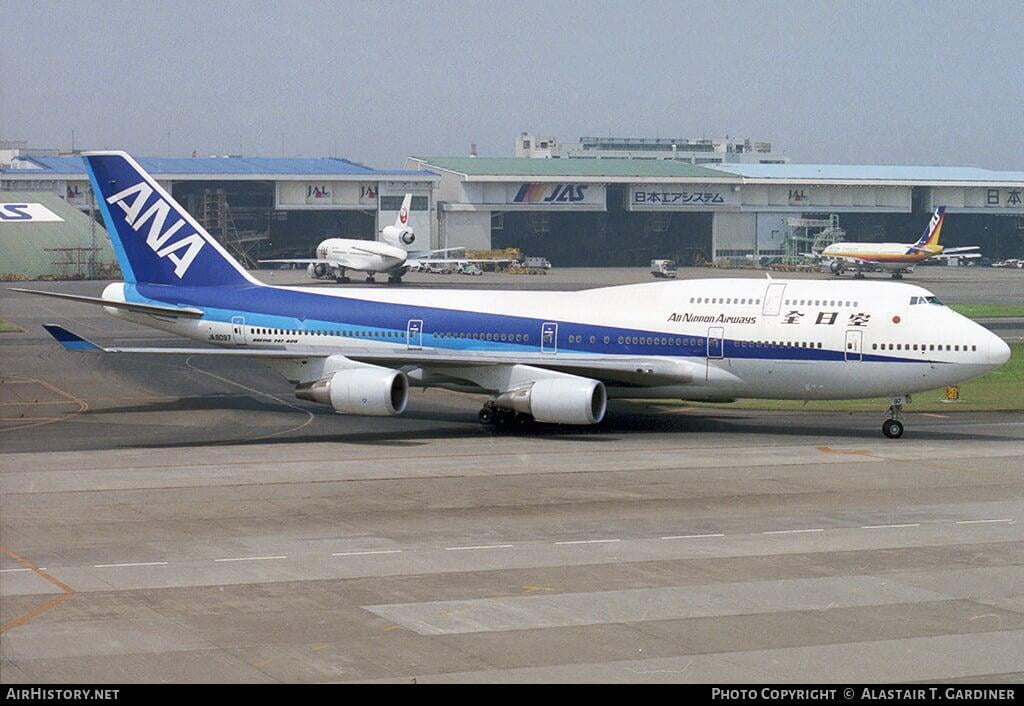
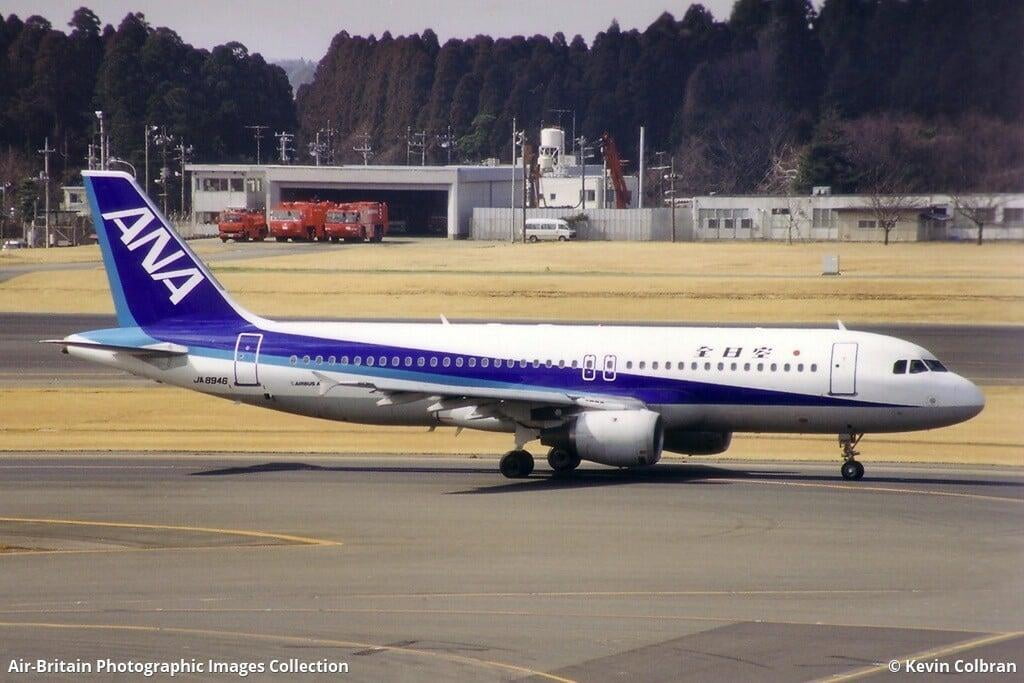
In 1995 the Boeing 777-200 was added for medium and high density routes. The following year it received the Boeing 777-300 for long haul routes and the Airbus A321 for short haul flights. During the second half of the 1990's the airline had expanded with the help of the new aircraft types to cities such as Frankfurt, Shanghai, San Francisco and Honolulu. ANA joined the Star Alliance in October 1999.
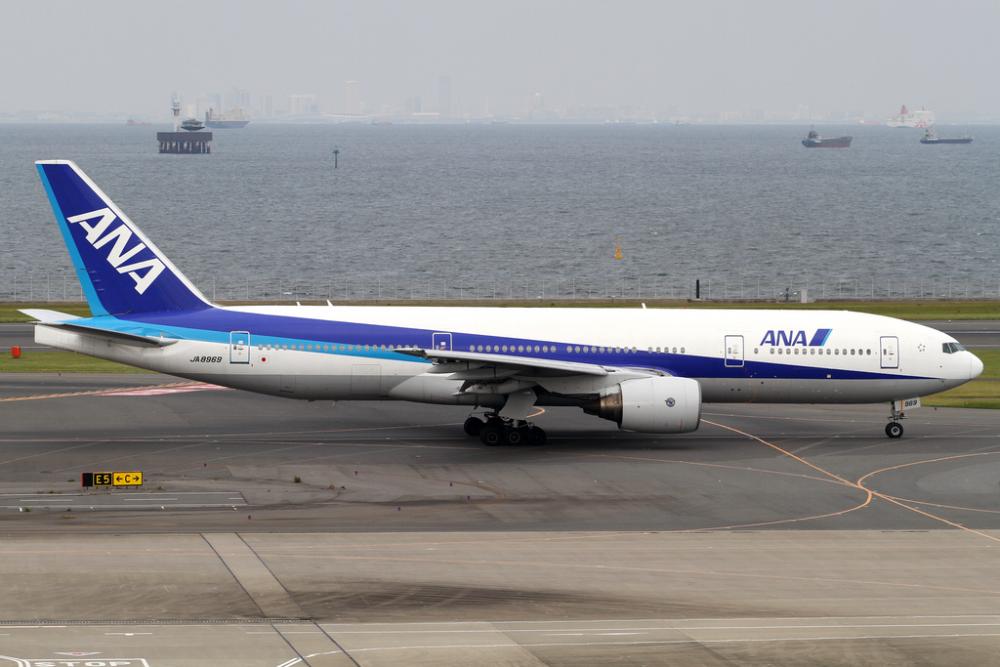
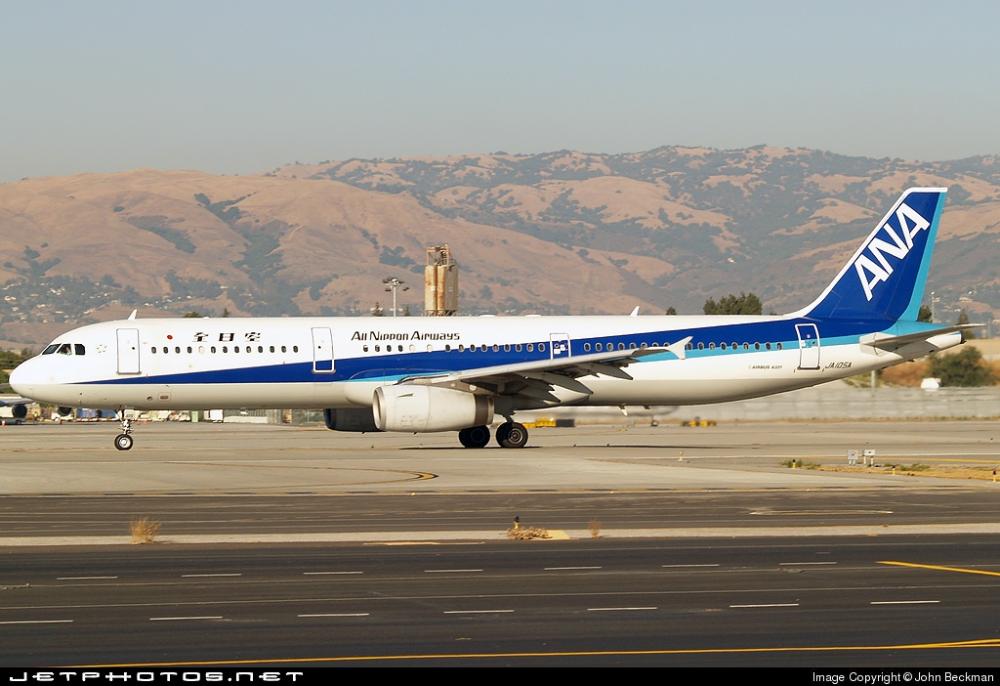
In 2001, ANA updated it’s thinner domestic flights with Bombardier DHC-8-300. It also took delivery in 2004 of the first Boeing 777-300ER. 2004 saw ANA's profits exceed JAL's for the first time. That year, facing a surplus of slots due to the construction of new airports and the ongoing expansion of Tokyo International Airport, ANA announced a fleet renewal plan to replace some of its larger aircraft with a greater number of smaller aircraft.
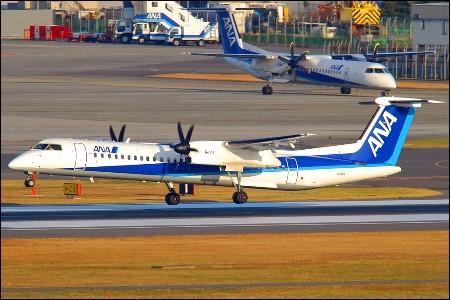
.jpg)
Also in 2004, ANA set up low-cost subsidiary Air Next to operate flights from Fukuoka Airport starting in 2005, and became the majority shareholder in Nakanihon Airline Service (NAL). In 2006, the airline was recognized as the most punctual scheduled airline between London and Tokyo for the last four consecutive years. In 2005 and 2008 it took delivery of advanced Boeing 737-700 and -800 series aircraft respectively.
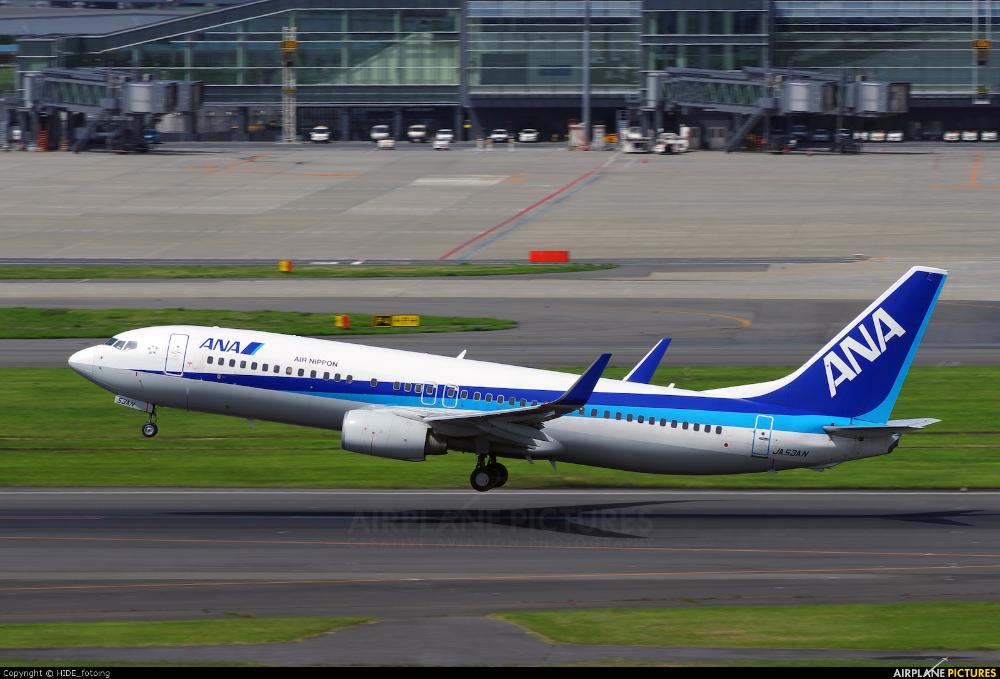
On 10 November 2009, ANA announced "Inspiration of Japan", ANA's newest international flight concept, with redesigned cabins initially launched on its 777-300ER aircraft. In July 2011, All Nippon Airways and AirAsia agreed to form a low-cost carrier, called AirAsia Japan, based at Tokyo's Narita International Airport. ANA held 51 percent shares. The carrier lasted until October 2013, when AirAsia withdrew from the joint venture; the carrier was subsequently rebranded as Vanilla Air.
In November 2011, the airline took delivery of its first Dreamliner, the Boeing 787-8. ANA was part of the development team, as the first launch customer in the world. The key to the exceptional performance of the 787 is a suite of new technologies. Composite materials make up 50 percent of the primary structure of the 787 including the fuselage and wing.
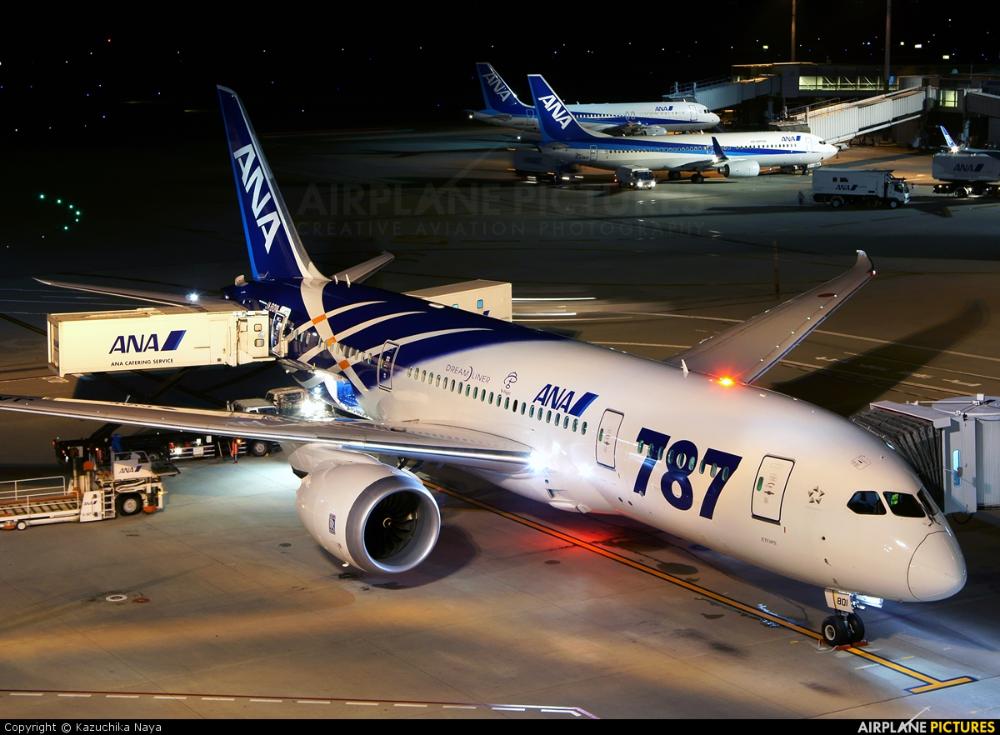
In August 2014, it received it’s bigger sister Dreamliner, the 787-9, which inaugurated flights to Dusseldorf, Houston, Kula Lampur, Brussels, Guangzhou and Sydney one year later in 2015. Also in 2015, ANA placed orders for 15 Mitsubishi Regional Jet (MRJ) for regional flights operated by ANA Wings, its wholly owned regional subsidiary.
On 29 January 2016, ANA signed a purchase agreement with Airbus, covering the firm orders for three Airbus A380s, with deliveries starting in late 2018. This will make ANA the only Japanese airline to operate the Airbus A380 and will be used on the Tokyo to Honolulu route.
In March 2018, All Nippon Airways announced the integration of its two low cost carrier subsidiaries Peach Aviation and Vanilla Air into one entity retaining the Peach name.

ANA decided to launch it's new Airbus A380 with a special livery motif "FLYING HONU". At the time, the design ANA introduced was blue, an homage to the Hawaiian blue sky. Later, ANA announced two more colors, green and orange for the other aircraft. The emerald green is inspired by the crystal clear waters of the Hawaiian ocean and orange is a reference to the beautiful Hawaiian sunset. In total the japanese airline will operate 3 A380's.
ANA, prides itself in passenger service, hospitality, punctuality, advanced technology usage and energy savings initiatives to stand out and grow as the leading company in Japan.
History source: Wikipedia.org + ANA.co.jp
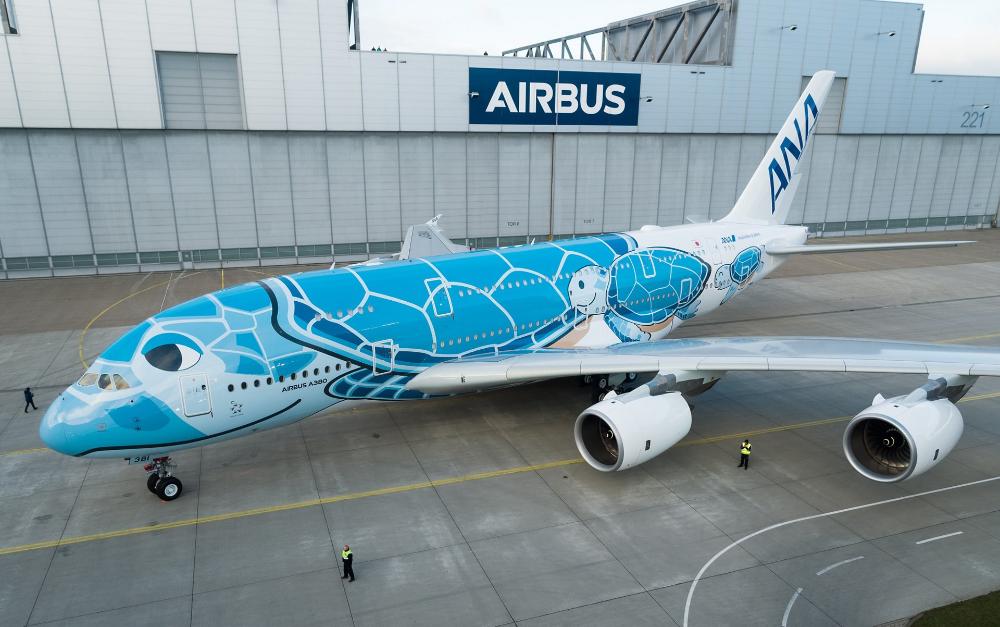
Operations and Destinations 🌍:
ANA operates to an impressive 22 countries over the world with over 62 cities served. ANA has a large domestic route network that covers the entirety of Japan, from Hokkaido in the north to Okinawa in the south. ANA's international route network extends through China, Korea, Southeast Asia, United States, Mexico, and Western Europe. Its key international hub is Narita Airport, where it shares part of Terminal 1 with its Star Alliance partners. It also uses Tokyo Haneda as a secondary hub where it flies to major international routes and business destinations.
ANA, flies to the following destinations*:
| Region 🗺️ | Destinations 🌍🌎🌏 |
|---|---|
| ✈Japan (domestic) | Akita, Aomori, Asahikawa, Fukuoka, Fukushima, Hachijōjima, Hakodate, Hiroshima, Ishigaki, Iwakuni, Kagoshima, Kobe, Kōchi, Komatsu, Kumamoto, Kushiro, Matsuyama, Miyakejima, Miyakojima, Miyazaki, Monbetsu, Nagasaki, Nagoya, Nakashibetsu, Niigata, Odate, Ōita, Okayama, Okinawa, Ōnan/Hagi, Osaka (KIX, ITM) Ōshima, Ōzora, Rishiri Island, Saga, Sapporo, Sendai, Shizuoka, Shōnai, Takamatsu, Tokushima, Tokyo (NRT, HND) Tottori, Toyama, Tsushima Island, Wajima, Wakkanai, Yamaguchi-Ube, Yonago |
| ✈Asia | Bangkok, Beijing, Chennai, Chengdu, Dalian, Delhi, Guangzhou, Hangzhou, Ho Chi Minh City, Hong Kong, Jakarta, Kuala Lumpur, Manila, Mumbai, Phnom Penh, Qingdao, Seoul, Shanghai (PVG, SHA), Shenyang, Singapore, Taipei (TPE, TSA), Wuhan, Xiamen, Yangon |
| ✈North America and Mexico | Vancouver, Chicago, Hanoi, Honolulu, Houston, Los Angeles, New York City, San Francisco, San Jose, Seattle, Washington, D.C., Mexico City |
| ✈Europe | Brussels, Düsseldorf, Frankfurt, London, Munich, Paris, Vienna |
| ✈Australia | Perth, Sydney |
*Destination list is for reference only. Please check directly with the airline for updates.
*Note some destinations are only seasonal.*Correct info as of
Fleet ✈️:
AA operates with an impressive fleet size of more than 250 aircraft, which operate from domestic to international routes. Many of it's short haul and domestic flights are even operated by the larger aircraft due to the heavy demand, specially between Tokyo and other many cities like Osaka, Hiroshima, Nagoya or Fukuoka. ANA has also taken
The ANA fleet* consists of the following aircraft:
| Network 🌐 | Aircraft ✈️ |
|---|---|
| ✈Short and Regional | Airbus A320, A320neo, A321, A321neo. Boeing 737-500/700/800, B767-300/300ER. Bombardier dash-Q400. Mitsubishi MRJ-90 (on order). |
| ✈Medium haul | Boeing 737-800, B767-300ER, B777-200/300, B787-8. Airbus A320neo, A321neo. |
| ✈Long haul | Boeing 777-200/300ER, B787-9/10 Airbus A380 (Honolulu route only) |
*Correct fleet info as of
ANA Photo Slide 📷:
ANA Safety Video (B777-300ER) 🎬:
Reviews ⭐:
 |  |
|---|---|
| ✅Best airline to fly to Japan and connections within Japan | 👎 Not enough coverage in Europe, Australia and the American Continent (except North America). |
| ✅Extremely efficient and organised airline. Well structured. | 👎Ticket Prices are often expensive |
| ✅ Great rating in punctuality | |
| ✅Good domestic connections within Japan | |
| ✅Member of the Star Alliance for millage redemption. | |
| ✅Excellent on board service. Friendly and hospitable cabin crew. | |
| ✅Good complimentary meal service and drinks provided on board long haul flights | |
| ✅Comfortable cabin space (leg space) and good IFE. |

.png)



.png)